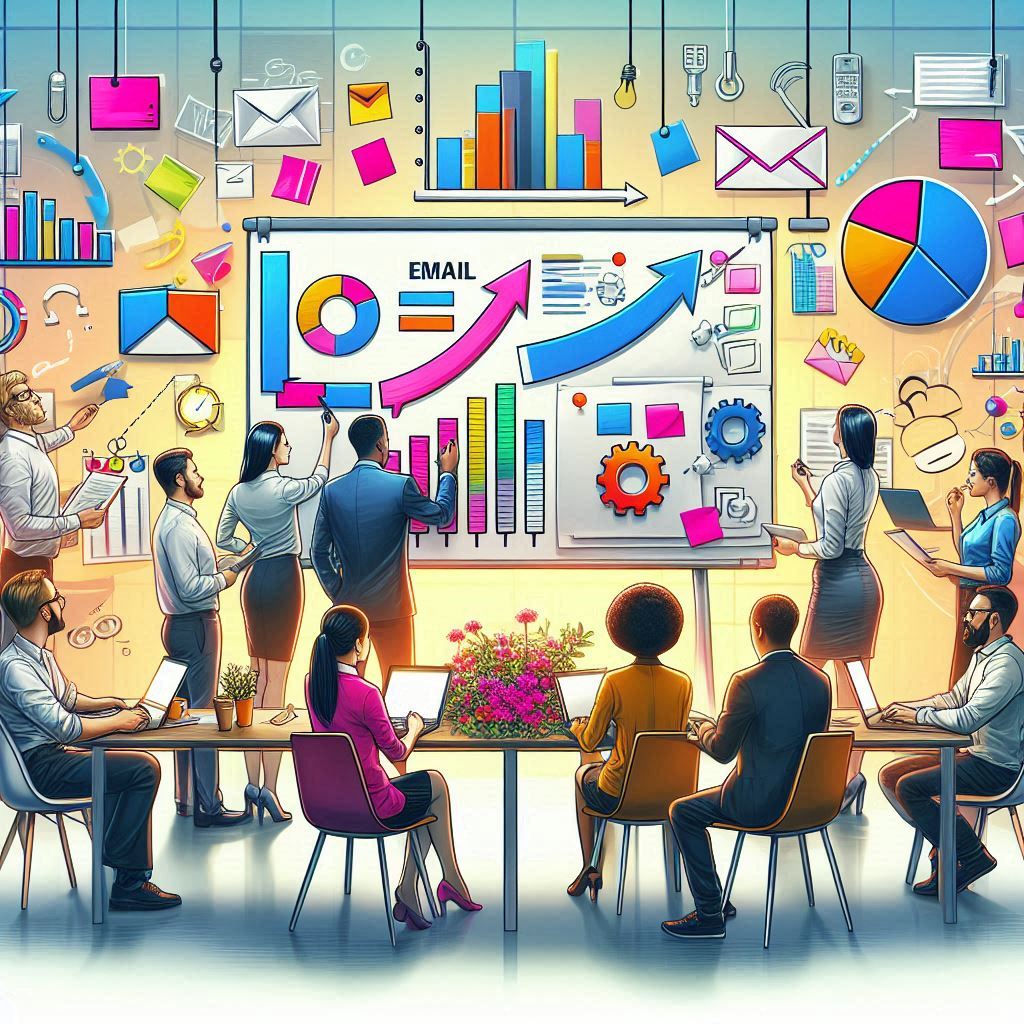Email Automation Strategies for 28.6% Conversions
Email automation is the most controllable lever CMOs and Marketing Ops leaders have to convert intent into pipeline, but most programs stall well below their potential.
Below, you’ll find the revenue-first playbooks that outperform bulk sends, the architecture to make attribution airtight, and CRO techniques that compound results over time. This enterprise playbook shows how to architect lifecycle systems that consistently push toward a 28.6% median conversion rate across your highest-impact flows—while tying every touch to multi-touch attribution and ROI. Everything is designed for growth-stage SaaS, mid-market e-commerce, and enterprise innovators who need measurable, defensible impact—fast.
If a quick, no-cost lifecycle audit would help you prioritize opportunities, Single Grain offers a brief diagnostic. Get a FREE consultation.
TABLE OF CONTENTS:
Proven Email Automation Playbooks That Lift Pipeline
Not all lifecycle flows are created equal. Welcome and recovery automations routinely outperform batch newsletters in terms of opens, clicks, and orders because they align message, moment, and intent. For example, Statista reports welcome emails averaging 68.6% open rates in 2023—more than triple typical promos—while abandoned-cart automation achieves ~10.7% order rates by capturing in-session buying signals. Pair those proven triggers with rigorous testing, and you have the backbone of a revenue-producing channel.
Use the matrix below to prioritize the flows most likely to drive conversion and revenue influence in the next 30–60 days.
| Lifecycle Playbook | Primary Trigger | North-Star KPI | Revenue Impact Rationale |
|---|---|---|---|
| Welcome & Onboarding Series | New signup, first purchase, or trial start | Activation rate; time-to-value | High-intent moment to set expectations, surface value, and segment users based on early actions. |
| Abandoned Cart/Browse Recovery | Cart add, checkout start, product view | Recovered order rate; revenue recovered | Behavioral triggers capture purchase intent; small UX and incentive tests yield outsized conversion lift. |
| Product Education & Nurture | Feature interest, content topic, or role | MQL→SQL rate; assisted pipeline | Builds problem-solution fit with content mapped to persona and JTBD, accelerating sales cycles. |
| Reactivation & Win-Back | Inactivity thresholds; churn risk flags | Reactivation rate; churn prevented | Targets lapse windows with tailored offers and value reminders to protect LTV. |
| Expansion, Cross-Sell, Upsell | Usage milestones; propensity to buy | Expansion ARR; average order value | Revenue compounding: educate on adjacent use cases and bundle upgrades when leading indicators are present. |
Advanced Email Automation Triggers That Convert

While the above playbooks are foundational, enterprise teams extract more value by enriching triggers with product analytics, CRM data, and predictive scores. This is where email automation evolves from a calendar of sends into a living, learning revenue system.
- Event-depth triggers: Fire based on high-value behaviors (e.g., “created first project” vs. “logged in”).
- Propensity-based routing: Use lead scores and predicted LTV to choose offers and cadences.
- Lifecycle gates: Advance users only when “ready” thresholds are met to avoid premature asks.
- Offer elasticity: Swap in offers based on price sensitivity or discount aversion flags.
- Channel arbitration: If push/SMS has already won the click, suppress the next email to prevent fatigue.
For teams looking to move beyond basic segmentation, layering dynamic content is essential. If you’re exploring ways to automate personalized content in B2B with AI-driven workflows, start by matching modules to intent signals and role data. And when you need ideas for bite-sized experiments that return insights fast, these high-impact email growth hacks you can test within days help you move from strategy to momentum.
Revenue-First Architecture & CRO Multipliers for Automated Email ROI
To defend budget and accelerate revenue, you need a measurement stack that is attribution-ready by design. In a Forrester-profiled enterprise program, unifying behavioral, CRM, and revenue data with journey analytics produced a 27% trial-to-paid lift and 31% more influenced pipeline after rolling out robust attribution, underscoring how architecture and analytics unlock meaningful growth (see Forrester’s Customer Journey Management Platforms Landscape for ecosystem context).
At the channel level, the efficiency upside remains massive: Statista’s 2023 overview estimates email at ~$42 ROI per $1 spent (4,200%). Email automation magnifies that efficiency by scaling high-relevance messages without linear headcount costs—provided you connect the dots from event triggers to conversion and revenue.

An Attribution and Measurement Model for Email Automation
Adopt a measurement approach that finance trusts. Tie email automation to pipeline and bookings with a consistent evidence chain—from trigger to conversion to revenue record.
- Identity and data unification: Resolve user IDs across ESP, CRM, and product analytics; pass critical events and attributes to your CDP.
- Attribution you can explain: Configure multi-touch models (position-based or time-decay) and validate against holdout tests where feasible.
- Experimentation at every layer: Run subject-line and content multivariates, but also test trigger logic, send timing, and friction-removing UX.
- Decisioning and resourcing: Integrate insights into offer selection, channel arbitration, and budget allocation dashboards, enabling executives to make informed decisions.
If you’re building the content backbone that fuels these journeys, AI can accelerate research and modular content production—an approach we pair with our Programmatic SEO and Content Sprout Method to keep nurture streams fresh and relevant. That same mindset powers practical email marketing strategy tips that turn insights into operational playbooks.
From Inbox to Conversion: UX and A/B Tests That Move Revenue

Subject lines, preview text, and hero messaging drive opens and clicks, but the bulk of revenue is won (or lost) on the post-click journey. Treat email experiments as full-funnel tests that include landing pages, forms, and checkout flow. In one MarketsandMarkets-profiled SaaS program, tying AI-driven segmentation and testing to revenue intelligence produced a 34% MQL-to-SQL lift in 90 days and 22% faster sales cycles—the kind of compounding gains only possible when analytics and CRO are tightly integrated (read the guide to Revenue Intelligence Platforms for context).
This is where Single Grain’s CRO (A/B testing, UX optimization) and Data & Analytics (marketing automation, multi-touch attribution, custom dashboards) teams collaborate to convert incremental wins into Growth Stacking gains. We routinely augment lifecycle emails with conversion-focused page variants, form optimization, and friction diagnostics—Moat Marketing principles that protect your advantage. To align your channel tests with broader business goals, we recommend prioritizing marketing strategies that reliably increase conversions across the entire funnel.
Want to see what this looks like in your stack? Our SaaS Marketing and Data & Analytics teams can blueprint an attribution-ready email automation system and an experiment roadmap for your top three flows. Get a FREE consultation.
Turn Email Automation Into Measurable Revenue: Next Steps
If you’re aiming for a defensible, scalable program that moves the needle toward a 28.6% median conversion rate, focus on three pillars: high-intent playbooks, attribution-ready architecture, and CRO across the post-click journey. Lean on proven triggers—welcome and abandoned-cart—to generate early wins, then layer in nurture and expansion with dynamic content and predictive scoring. As you scale email automation, tie every test to pipeline and revenue so the impact is visible in board-level dashboards.
Single Grain accelerates this with Data & Analytics (marketing automation and multi-touch attribution), CRO (systematic A/B testing and UX optimization), and SaaS Marketing services—integrated with Programmatic SEO and the Content Sprout Method to keep your nurture content fresh. For additional practical ideas you can put to work this quarter, explore these email marketing strategy tips and a concise set of growth-oriented tests tailored to email.
Ready to make your email automation program ROI-obsessed and attribution-ready? Get a FREE consultation.
Related Video
Frequently Asked Questions
-
What is email automation at the enterprise level?
Enterprise email automation is a lifecycle engine that uses behavioral, CRM, and product data to trigger contextual messages at scale. It goes beyond simple drip campaigns by employing segmentation, predictive scoring, dynamic content, and attribution to maximize revenue influence while minimizing noise and fatigue. The goal is to create a defendable system that enables proving lift on activation, win-back, recovered revenue, expansion ARR, and assisted pipeline.
-
Which KPIs prove revenue impact from lifecycle email?
Track both direct and assisted outcomes. Direct metrics include recovered order rate (for cart flows), activation rate, and expansion revenue. Assisted metrics include MQL→SQL conversion, opportunity creation, influenced pipeline, and sales-cycle time.
-
How fast can we reach a 28.6% median conversion rate?
Timelines vary by data readiness, list quality, offer strength, and post-click UX. Many teams achieve double-digit lifts within 60–90 days by prioritizing welcome/onboarding and cart recovery (high-intent triggers with clear economics), then expanding into nurture and expansion. Use controlled tests and holdouts to validate progress toward your program-level median goal.
-
How does email automation work with outbound and paid media?
Unify identity and suppression across channels to prevent over-messaging prospects reached via ads or SDRs. Use journey analytics to arbitrate which channel gets the next touch, and feed signal back into audience building.




